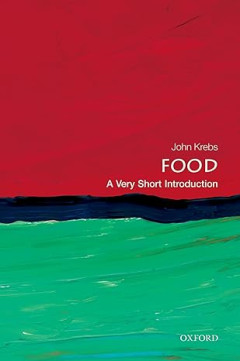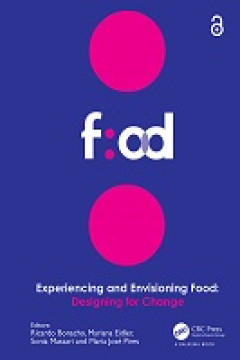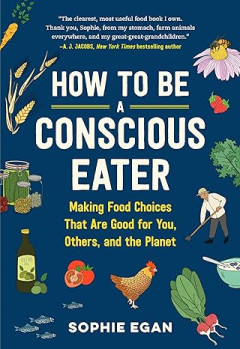Ditapis dengan
Food Chemical Safety vol 2 : additives
The control of food additives has been much discussed in a newspapers and other parts of the media and yet, rather surprisingly, there have been few scientific books about additives. There have been detailed reports of the work of expert committees such as the Joint FAO/WHO Expert Committee on Food Additives and informative and commentaries on individual and legislative controls, notably those …
- Edisi
- -
- ISBN/ISSN
- -
- Deskripsi Fisik
- xi + 308 hlm; 14 x 21 cm
- Judul Seri
- -
- No. Panggil
- 664 WAT f
E-book The Sustainability of Meat and Cured Meats in Italy : Nutritional Aspe…
THE NUTRITIONAL VALUE OF MEAT I 13The Mediterranean Diet is the result of millennia of exchanges of food and cul-tures between people from all the coun-tries bordering the Mediterranean basin. This model, known to be one of the health-iest and most balanced, in the twentieth century has characterised the eating hab-its of the inhabitants of the Mediterrane-an region, o…
- Edisi
- -
- ISBN/ISSN
- 9788891793324
- Deskripsi Fisik
- 251 hlm
- Judul Seri
- -
- No. Panggil
- 664.9 ELI t

E-book Food: A Very Short Introduction
In this Very Short Introduction, Prof Lord John Krebs provides a brief history of human food, from our remote ancestors 3 million years ago to the present day. By looking at the four great transitions in human food - cooking, agriculture, processing, and preservation - he considers a variety of questions, including why people like some kinds of foods and not others; how your senses contribute t…
- Edisi
- -
- ISBN/ISSN
- 9780199661084
- Deskripsi Fisik
- 266 halaman
- Judul Seri
- -
- No. Panggil
- 577.16 KRE f
E-book Ending Hunger - Through South-South and Triangular Industrial Cooperation
Agribusiness development is largely predicated on the adoption and utilization of advanced agricultural technologies. This includes precision farming methods, integrated pest management techniques, innovative irrigation systems, and technologies that facilitate value addition such as advanced processing and packaging methods. By leveraging SSTIC, UNIDO is encouraging the exchange and adaptatio…
- Edisi
- -
- ISBN/ISSN
- -
- Deskripsi Fisik
- 20 halaman, ilus
- Judul Seri
- -
- No. Panggil
- 363.8 UNI e
E-book Supporting Sustainable Supply Chains - Through South-South and Triangu…
As an indispensable axis of contemporary international cooperation, South-South and Triangular Industrial Cooperation (SSTIC) operates at the intersection of global value chains and sustainability. This strategic platform embodies an evolving paradigm, explicitly designed to foster the technical and economic prerequisites for the creation of sustainable supply chains. This publication elaborate…
- Edisi
- -
- ISBN/ISSN
- -
- Deskripsi Fisik
- 20 halaman, ilus
- Judul Seri
- -
- No. Panggil
- 363.8
E-book The Curry Secret : Indian Restaurant Cookery at Home
Many difficulties stand in the way of anyone trying to explore the secrets of Indian cooking. People buy a cookbook but find the traditional recipes and methods can be disappointing when they produce a home cooked taste and not the distinct flavour of their favourite restaurant curries. This is not really surprising, as the art of restaurant cooking is a very closely kept secret, next to imposs…
- Edisi
- -
- ISBN/ISSN
- 9780716020547
- Deskripsi Fisik
- 91 hlm
- Judul Seri
- -
- No. Panggil
- 641.554 DHI t
E-book Transitioning to Zero Hunger
ood insecurity is a worldwide concern. Today, the quest for a world whereeveryone has access to sufficient, safe, and nutritious food has never been socrucial. In 2021, around 2.3 billion people were food-insecure, seriously affectingaround 11.7% of the world’s population (FAO et al. 2022). Food insecurity has beenexacerbated by the social and health crises the world has been ex…
- Edisi
- -
- ISBN/ISSN
- 9783038978633
- Deskripsi Fisik
- 264 hlm
- Judul Seri
- -
- No. Panggil
- 363.8 CHE t

E-book Experiencing and Envisioning Food
Experiencing and Envisioning Food: Designing for Change contains papers on gastronomy, food design, sustainability, and social practices research as presented at the 3rd International Food Design and Food Studies Conference (EFOOD 2022, Lisbon, Portugal, 28-30 April 2022). The contributions explore potential solutions to current problems in the food system, and outline scenarios on the future o…
- Edisi
- -
- ISBN/ISSN
- 9781032479897
- Deskripsi Fisik
- 263 halaman
- Judul Seri
- -
- No. Panggil
- 664 BON e

E-book How to Be a Conscious Eater: Making Food Choices That Are Good for You…
Is organic really worth it? Are eggs ok to eat? If so, which ones are best for you, and for the chicken—Cage-Free, Free-Range, Pasture-Raised? What about farmed salmon, soy milk, sugar, gluten, fermented foods, coconut oil, almonds? Thumbs-up, thumbs-down, or somewhere in between? Using three criteria—Is it good for me? Is it good for others? Is it good for the planet?—Sophie Egan help…
- Edisi
- -
- ISBN/ISSN
- 9781523507382
- Deskripsi Fisik
- 280 halaman, ilus.
- Judul Seri
- -
- No. Panggil
- 612.3 EGA h
E-book Project Report of Bread Making
The most common variety of bread is white bread. It is made form wheat flour (extraction rate of 77%) and is made into many different sizes, shapes and textures. Ingredient such as other cereal or vegetable flours, seed, herbs, or a mixture of these can be added. May be made form any combination of flours, grains, whole grains, or wheat and seeds.
- Edisi
- -
- ISBN/ISSN
- -
- Deskripsi Fisik
- 29 hlm
- Judul Seri
- -
- No. Panggil
- 641.3 SAM p
 Karya Umum
Karya Umum  Filsafat
Filsafat  Agama
Agama  Ilmu-ilmu Sosial
Ilmu-ilmu Sosial  Bahasa
Bahasa  Ilmu-ilmu Murni
Ilmu-ilmu Murni  Ilmu-ilmu Terapan
Ilmu-ilmu Terapan  Kesenian, Hiburan, dan Olahraga
Kesenian, Hiburan, dan Olahraga  Kesusastraan
Kesusastraan  Geografi dan Sejarah
Geografi dan Sejarah